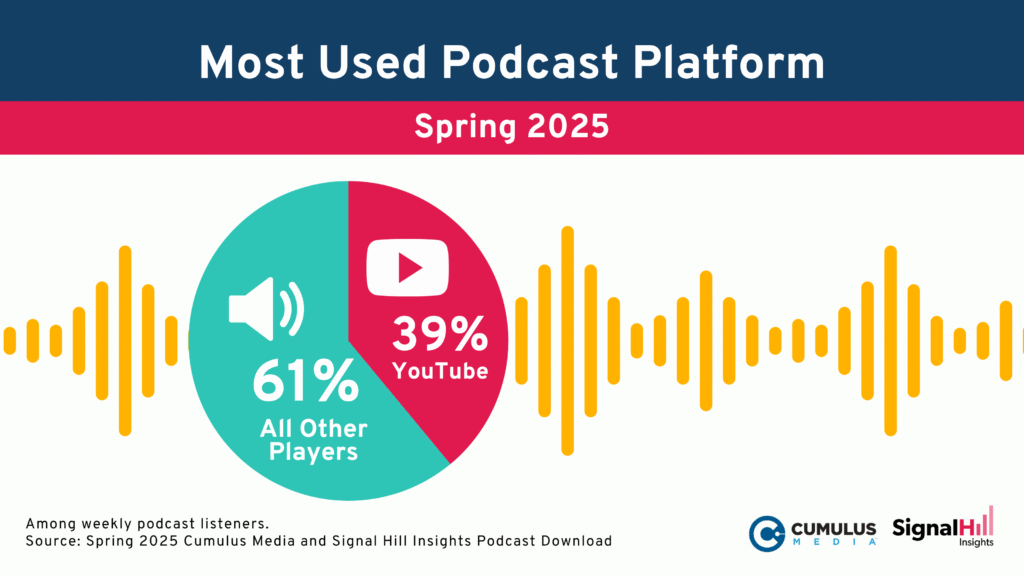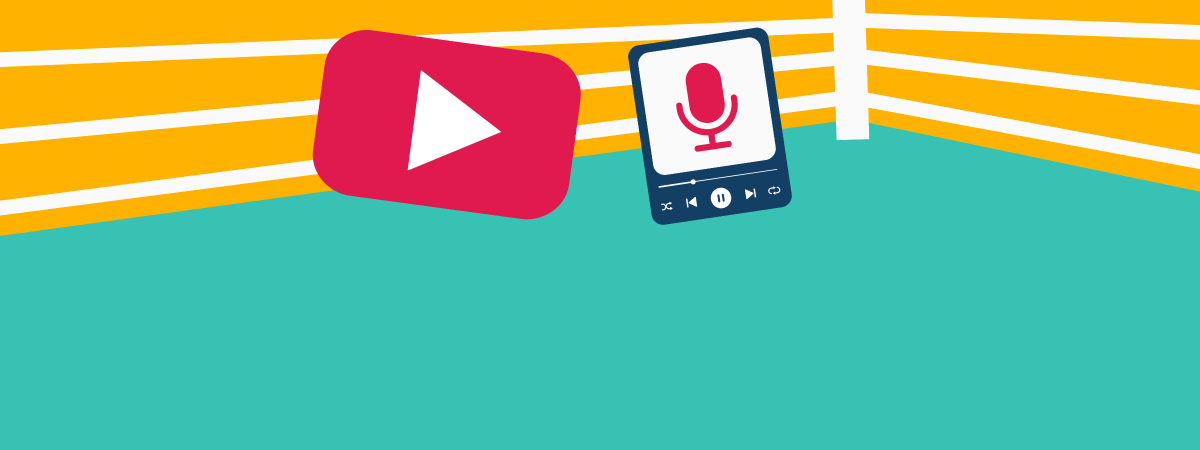Paul Riismandel
There’s no doubt that YouTube has become an important force in podcasting, primarily due to growing consumer preference for the video platform. The Cumulus Media / Signal Hill Insights Podcast Download study released in April 2023 marked the first time we saw YouTube overcome Spotify as the most used podcast consumption platform in the US. The platform claimed the top spot in Canada the following year in the Canadian Podcast Listener.
Since then, discussion, fervor and consternation about YouTube has reached fever pitch in the podcasting community. In news articles and at conferences I’m also hearing exaggerated declarations that the platform is now “dominating” podcasting. Simply stated, this is not true.
It’s an easy leap of logic to make. You hear that YouTube is the number one most preferred podcast app. From there, it’s not a big jump to think being number one means it’s dominating – the absolute winner in the tournament of podcast apps. But this isn’t sport, and consumer preference isn’t the Super Bowl or FIFA World Cup. There are no Wimbledon elimination brackets to find the one true champion.
The focus on rankings blurs the overall picture, overshadowing the fact that today no single platform dominates podcasting in North America.
A sneak peek from the Spring Download study shows that the preference for YouTube in the US continues to grow. Today, 39% of weekly podcast consumers say they use it most. While that’s a bigger share than any other platform, 39% is not even a majority.

Put another way, a majority – 61% – of podcast consumers use another platform other than YouTube most often. Just about half of that goes to Spotify (21%) and Apple Podcasts (8%) together. The remaining 32% is claimed by a long tail of apps and platforms, including iHeartRadio, Amazon Music, a podcast’s website, and many others.

Let’s also be clear about what’s being measured. These shares represent the platform consumers use most often – not exclusively. The 39% of podcast consumers using YouTube most are also using other podcast platforms. In fact, half of these YouTube primaries also use Spotify occasionally or frequently, while at least a quarter use Amazon Music, iHeartRadio or Pandora.
Most consumers don’t have a single podcast platform – they use two or more. As the research partner for Sounds Profitable, we at Signal Hill Insights get the chance to look behind the curtain at the wealth of information in their landmark studies. One previously unpublished finding from The Podcast Landscape 2024 puts the whole idea of platform dominance in perspective. Only 26% of monthly US podcast consumers said they use just one app or service for podcasts.
Moreover, at least half of YouTube users in the US and Canada say they also listen to their YouTube podcasts on audio platforms. That’s simply because there are times when they can’t or don’t want to look at a screen, making audio much more appropriate.


All of this isn’t meant to discount YouTube and its growing influence in podcasting. But it’s time to tone down the discourse. Saying that it’s necessary for all podcasters to fully embrace YouTube, right now, is overblown.
Rather, it is sensible for any growth-focused podcaster to have a considered YouTube strategy, even if that strategy is to delay or resist getting on YouTube. The majority of podcast consumers are still using an audio-first platform most often, and even most YouTube primaries are using audio apps. It’s just not a life or death situation (yet).
YouTube podcasting is part of the medium’s overall growth story. The vast majority of weekly podcast consumers (86%) use it at least occasionally, and it’s the leading source for discovery. There are many ways a podcast can leverage this, and it’s important not to make a decision out of panic, fear, desperation or capitulation.
So, no, YouTube is not dominating podcasting. The fact that podcasts are easily distributed across an exceptionally diverse ecosystem of platforms and apps serves as a headwind against any one of them dominating the medium. However, it is a force to be reckoned with. At Signal Hill, we’ve been monitoring YouTube’s rise for six years across multiple studies, and we look forward to researching and analyzing why and how podcast consumers are using it as podcasting continues to evolve and grow..
We have many more fresh insights to share in the Spring Download, including how and where people are consuming their favorite podcast, and the emerging role of smart TVs. Be sure to register for our free webinar with Cumulus Media on June 17.




